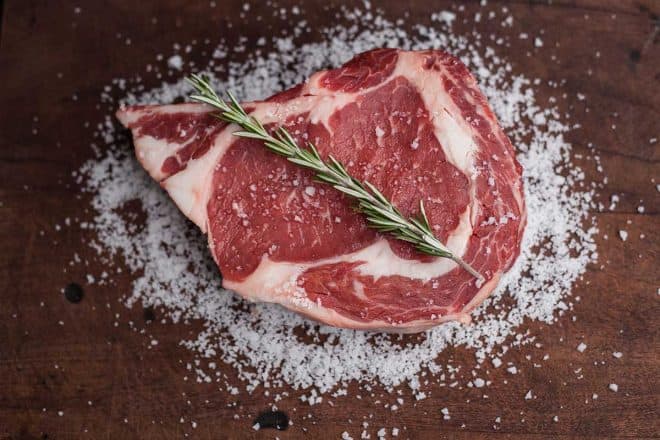Understanding meat safety is a key element in ensuring your family’s health. Before the industrialization of food, cattle, pigs, sheep, and goats were pastured and slaughtered for their meat once they were physically mature, except in the case of veal and lamb. The amount of time needed for an animal to grow to sufficient size was dictated by the quality of the pasture, the weather, and the genetics of the breed.
The industrialization of meat brought us images of horrific living standards and inhumane slaughtering processes in factory farms. Instead of grazing on grasses, these cattle may be tied to posts in feed lots where they are fed grain, such as GMO corn.
In the US and in many other countries, hormones are administered to the livestock to make the animals grow faster. Many steroid hormone drugs, including natural estrogen, progesterone, testosterone, and their synthetic versions have been approved by the FDA for use in beef cattle and sheep. The EU has not given approval to these same drugs. The FDA has not approved steroid hormones for growth purposes in dairy cattle, veal calves, pigs, or poultry.
Animals in factory farms are commonly injected with antibiotics to help protect them from the increased risk of illness that comes from their dirty, confined living quarters and their unnatural food source. The FDA has approved prophylactic antibiotic use for animals until slaughter. It was only until recently that the FDA allowed the administration of arsenic to cattle—after detecting arsenic in meat, the FDA finally removed it from the list of acceptable treatments in 2015. The widespread use of antibiotics has come under more scrutiny as superbugs, resistant to antibiotics, are becoming more and more common.
In addition to antibiotics and an unnatural diet, factory-farmed meat can also be altered by the animals’ stress levels. Stress causes the excessive production of cortisol, which leads to biochemical changes in an animal’s cells. Meat from a stressed animal will have a different color, tenderness, and perishability than the meat from a non-stressed animal.
Meat safety is understood in different ways around the world. In a spiritual sense, when eating, one consumes a physical form with an underlying frequency and energy. Eating the meat of a healthy, vibrant animal may impart a greater sense of well-being to us than eating the meat from an animal that has been chained to a feed lot, living a life of constant stress. Respect for an animal’s “energy” permeates many cultures around the world. I wonder if the energy within the meat might be even more important for our health and well-being than the biochemical makeup of the meat.
For optimal meat safety, if you choose to eat beef, lamb, pork, and veal, it is best to eat organic varieties, or in the case of beef, grass-fed beef. A label from the American Grassfed Association will reliably indicate that you are purchasing grass-fed beef that has not been fed corn. Depending on where you live, local farmers may pasture their cattle without injecting them with steroids or antibiotics. You can have a quarter or side of beef sectioned into various cuts, and many packages of ground beef as well. This is not only economical, but you know that you are eating the meat from one cow.

